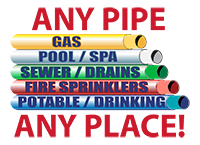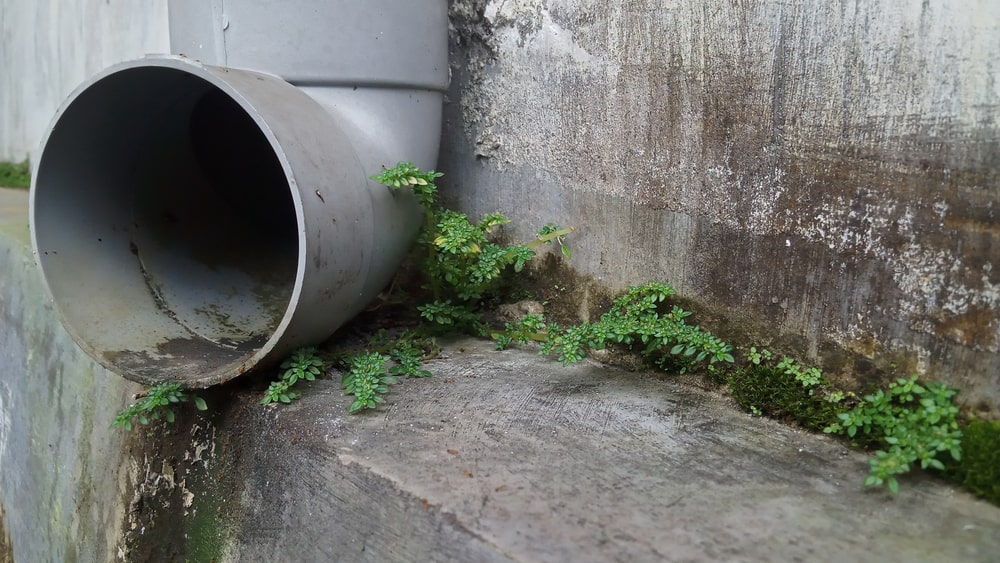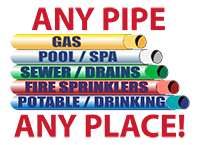Trenchless pipe installation technology is becoming more and more popular for plumbing projects. There are a variety of reasons for this, such as a reduction in costs, less environmental impact, and faster completion times.
This technology makes it possible to install pipes without digging wide trenches. Instead, pipes are installed by boring small holes through the ground and installing the pipe on the other side. T
Read on to know more about trenchless pipe installation methods, including pipe bursting, micro tunneling, and more.
What is trenchless pipe installation?
The traditional method of pipeline installation involves digging an open trench, placing the pipeline, and then burying it. While this method is suitable for quieter rural areas, it poses problems in busy urban areas, crossings, and industrial complexes. This method can also be disruptive to wildlife habitats and environmentally sensitive areas.
Trenchless pipe installation technology has been used extensively in areas where minimizing disruptive effects is key,
As the term, ‘trenchless’ suggests, trenchless pipe installation is a method of pipe installation that doesn’t require digging a trench.
This type of installation is ideal for areas where digging a trench would be difficult or impossible, such as rock or hard clay soils. It is also less disruptive to the surrounding area, which is a plus for environmentally sensitive areas.
This method is also known as “no-dig” pipe installation, and it is a growing trend in the construction industry.
There are two several techniques of trenchless pipe installation with the most common ones being pipe jacking and pipe bursting. Pipe jacking is used to install a new pipe by pushing it through the ground. Pipe bursting is used to replace an existing pipe by breaking it up and pulling the new pipe through the old one.
Let’s take a closer look at the different techniques used for trenchless pipe installation.
Horizontal auger boring (HAB)
This is a trenchless pipe installation method used to install pipelines underground without disturbing the surface above or when trenching is not possible or practical.
This method is often used to install pipelines beneath roads, railways, waterways, and other obstacles/sensitive areas.
HAB involves drilling a pilot hole along the desired path of the pipeline using a horizontal drilling machine. Once the pilot hole is drilled, a reaming head is attached to the drill string and used to enlarge the hole to the desired diameter. The pipeline is then pulled through the hole using a winch or other mechanical device.
This method is typically used for installing pipes that are less than four feet (1.2 meters) in diameter. The major advantage of this method is that only two pits are required, one for excavation and the other for launching. HAB can be used in any type of soil with the only exception being mixed soils with boulders.
HAB is considered to be a less disruptive and more environmentally friendly alternative to traditional trenching methods. It is also typically more cost-effective and quicker to execute.
Pipe jacking
As one of the popular methods of trenchless pipe installation, pipe jacking is used in areas where open trench excavation is not possible or practical.
To install a pipe using pipe jacking, a small hole is first drilled into the ground. A jacking pipe is then inserted into the hole and pushed forward through the soil. As the jacking pipe is pushed forward, it pushes the new pipe behind it, which is gradually installed in the ground.
Pipe jacking is a convenient and efficient way to install a new pipe without having to excavate a large trench. This method is often used for installing sewer and water pipes in urban areas where space is limited.
Compared to most pipe installation techniques, pipe jacking is less disruptive and can be used in a variety of difficult situations. It is also one of the preferred techniques when pipes need to be installed at a depth of 1600 feet.
Pipe bursting
Pipe bursting is a trenchless method of replacing pipelines that are in poor condition or pipes that are too small to handle the desired flow.
The existing pipeline is “burst” or “fractured” by a hydraulic machine, and a new HDPE pipe is pulled through the old pipe’s path. Pipe bursting can be used to replace pipelines of various diameters, from small water lines to large sewer lines.
This method of trenchless pipe installation can be used on a variety of different pipe materials, including concrete, clay, steel, and plastic. Pipe bursting is a relatively quick and efficient way to replace an old pipeline, and it causes minimal disruption to the surrounding area.
Horizontal Directional Drilling (HDD)
Horizontal Directional Drilling (HDD) is a trenchless pipe installation process that uses a drill to create a horizontal borehole.
This trenchless pipe installation method is used to install underground utilities such as water, sewer, gas, and electricity.
HDDs are typically used in areas where traditional trenching methods would be difficult or impossible to use, such as under a road or railway. HDD is also a good choice when pipes have to be installed in difficult-to-reach areas or beneath obstacles such as roads and sidewalks.
The HDD process begins with the creation of a small pilot hole, which is then enlarged to a size that can accommodate the new pipe. Once the borehole is the correct size, the pipe is inserted and the hole is backfilled. This technique of trenchless pipe installation is suitable for both large and small diameter pipelines.
HDD is a safe and efficient way to install pipes without having to dig up the ground. This method of trenchless pipe installation can save time and money, and it minimizes disruption to the surrounding area.
Microtunneling
For massive projects, micro tunneling is the preferred pipe installation method as it doesn’t require a trench. It is typically used for big projects like installing a pipeline under a river or installation of sewer, water, and other types of utility lines.
First, a small hole is drilled from the surface. Then, a tunnel boring machine (TBM) is lowered into the hole. The TBM has a cutting head that is attached to a conveyor belt. The cutting head is used to bore a hole through the ground, and the conveyor belt is used to move the excavated material out of the way.
The microtunneling machine is also equipped with a laser guidance system that helps to keep the cutting head on course.
This method is faster and less disruptive compared to other methods, like open-cut trenching. Expert plumbers in San Diego use microtunneling to install pipes at depths ranging from 80 to 1500 feet and for pipes with diameters ranging between 20 to 120 inches.
And it is less likely to cause environmental damage. That’s why microtunneling is becoming more popular for big infrastructure projects.
Cured-in-place pipe (CIPP)
This is yet another popular trenchless method used to repair and rehabilitate existing pipelines. It is a cost-effective and time-efficient alternative to traditional pipe installation methods, such as open cut or slip-lining.
CIPP involves inserting a resin-soaked liner into an existing pipe. The liner is then inflated and left to cure, creating a new pipe within the existing one. CIPP can be used on a variety of pipe materials, including concrete, clay, metal, and plastic. It is a versatile solution that can be used to repair pipes that are damaged by corrosion, root intrusion, or leaks.
Pipe ramming
Skilled San Diego plumbers also make use of another trenchless pipe installation method called pipe ramming which involves using a hydraulic ram to push a pipe into the ground. The pipe is often made of steel or reinforced concrete, and it is used to create a new pipeline or to repair an existing one. This method is often used when traditional trenching is not possible or when it would cause too much damage to the surrounding area.
Pipe ramming is a safe and efficient way to install pipelines, and it has been used successfully for many years. The key advantage of this technique is that it does not call for the use of expensive equipment which makes it an economical method.
With pipe ramming, San Diego plumbers can install pipes in all types of soil. While pipes can be installed in segments or in one piece, pipe ramming is best suited for pipes of shorter lengths or those that are medium-sized.
Trenchless pipe installation: Key advantages
There are many benefits to trenchless pipe installation, including less disruption to the surrounding area, less damage to the environment, and fewer construction costs. Here are the top advantages of this type of pipe installation:
- Preserves your landscaping: Traditional sewer repair involves digging a huge trench in your yard that requires cutting through the beautiful landscaping and well-manicured lawn.
- Apart from being unappealing, messy, and laborious, trenched sewer repair or pipe installation severely damages, or worse, kill the trees, shrubs, and other vegetation. Trenchless pipe installation methods such as pipe bursting help keep the lawn, landscaping, and trees intact. In addition to being a faster and more efficient process, trenchless pipe installation methods avoid piling up huge amounts of mud and debris in your yard.
- Less disruption to homeowners: Trenchless methods are much less disruptive to homeowners than traditional excavation methods. There is no need to tear up your yard or driveway, and the installation can often be completed in just a few days.
- Lower costs: Trenchless installation is typically more cost effective than traditional excavation methods as there is less digging involved and the process is typically faster. Trenchless pipe installation can help you save 20 to 50 percent of the typical costs associated with traditional methods.
- Faster than traditional methods: Trenchless pipe installation is faster than traditional methods. This means that your project can be completed in a shorter time frame, which can save you time and money. While it can take up to 5 days to repair or replace a sewer with the traditional method, trenchless sewer repair can be completed in just one day.
- Durable: Trenchless pipe installation is more durable than traditional methods. Trenchless pipes are often made from stronger materials than traditional pipes minimizing the chances of leaks or damage. This gives the pipes an increased lifespan compared to traditional pipes. This means that your new pipes will last longer and will be less likely to require repairs or replacement.
- Environmentally friendly: Trenchless pipe installation is environmentally friendly. This means that there is less damage to your property and the surrounding area.
- Safer: Trenchless pipe installation is safer than traditional methods. This means that there is less risk of injury to you or your workers.
One of the best things about trenchless pipe installation is that it doesn’t require a large amount of space. The two most popular methods of trenchless pipe installation are pipe bursting and pipe jacking. They are relatively quick, relatively inexpensive, and don’t leave behind any holes or trenches as traditional trenching does. Trenchless pipe installation also allows for quick installation of pipes as it doesn’t require large-scale excavation.
While there are multiple advantages of trenchless pipe installation, all these methods require a high level of expertise and skill.
It is important to entrust this task to experienced San Diego plumbers who are adept at using the advanced technology and can make adjustments required based on any changes in the
machine operations, soil type, and other factors.
Contact an experienced San Diego plumber
It’s important to note that all trenchless pipe installation methods are suitable for every project. The type of installation method used will ultimately depend on your project goals and the soil conditions in your area.
Reputed plumbers start every project, minor or major, with a thorough site investigation to ensure the right technique is chosen. For example, when it comes to installing pipes in hard clay soils, horizontal auger boring is the best method. However, if you need to install pipes in rock or other hard soils, pipe jacking is the best option.
If you are wondering which method is best for your job, it is best to consult us at San Diego Plumbing and Pipelining for an accurate assessment of the situation.







